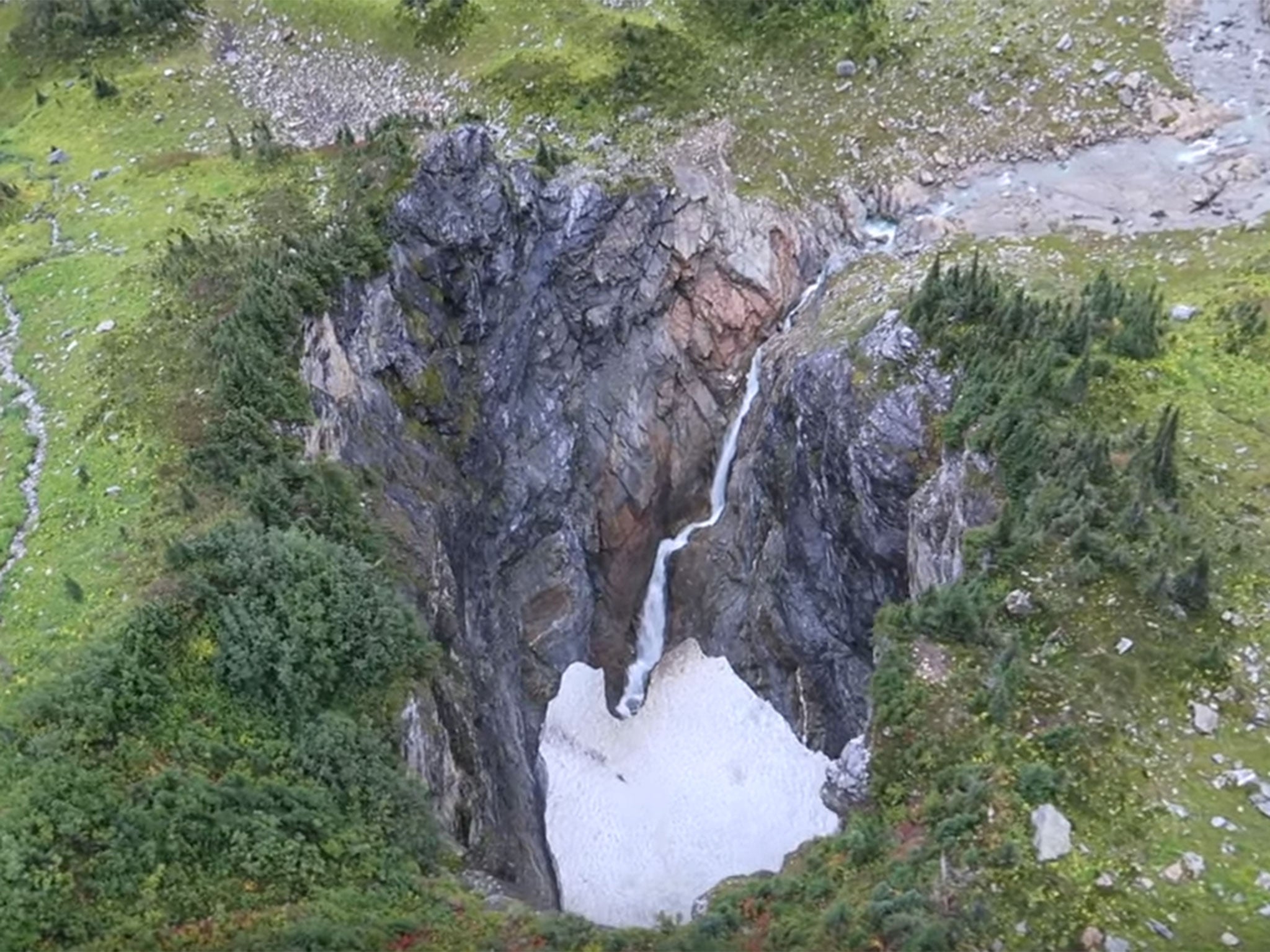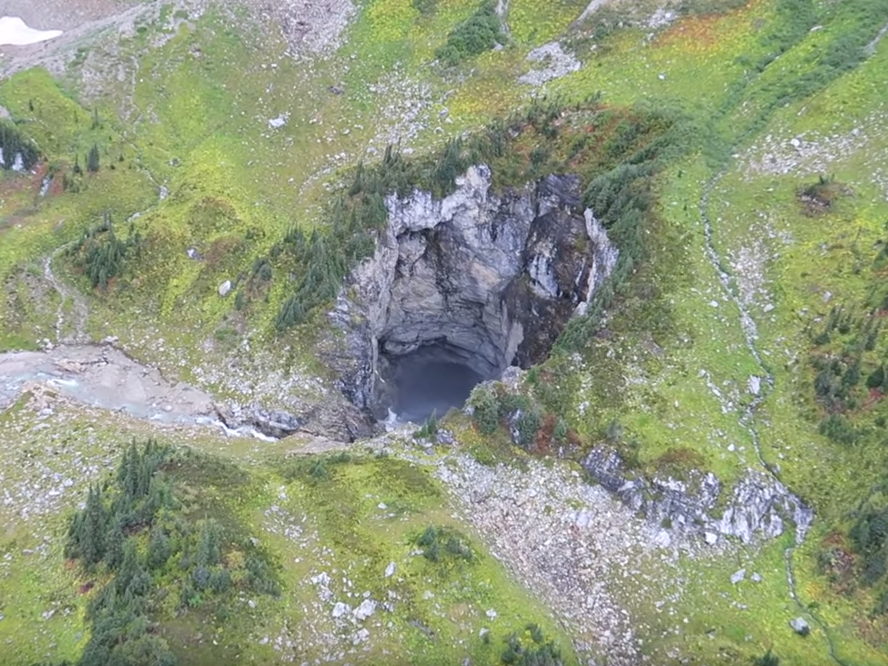Your support helps us to tell the story
From reproductive rights to climate change to Big Tech, The Independent is on the ground when the story is developing. Whether it's investigating the financials of Elon Musk's pro-Trump PAC or producing our latest documentary, 'The A Word', which shines a light on the American women fighting for reproductive rights, we know how important it is to parse out the facts from the messaging.
At such a critical moment in US history, we need reporters on the ground. Your donation allows us to keep sending journalists to speak to both sides of the story.
The Independent is trusted by Americans across the entire political spectrum. And unlike many other quality news outlets, we choose not to lock Americans out of our reporting and analysis with paywalls. We believe quality journalism should be available to everyone, paid for by those who can afford it.
Your support makes all the difference.A vast unexplored cave which was discovered by accident in Canada may have never been seen by humans before.
Officials from Canada’s ministry of national resources stumbled across the huge cavern while conducting a caribou count by helicopter in April.
After conducting an investigation and an initial exploration of the opening, the ministry said it believes the cave was not known even to First Nations peoples who have lived in the area for millennia.
The cave sits in pristine Alpine landscape inside a local national park in British Columbia, western Canada.
Experts have suggested that the cave might have been covered with snow all year round, until as recently as the 1990s, and thus lain undiscovered for thousands of years.
Rising temperatures caused by climate change could be to blame for its eventual emergence.
The cavern has not yet been named as government officials are consulting local First Nations groups, but that has not stopped it acquiring a nickname.
“The initial group that discovered it called it Sarlacc’s pit,” geologist Catherine Hickson, who was on the team which found it, told Global News.
The Sarlacc is a fictional monster which features in the Star Wars film Return of the Jedi, and lives inside a huge cave in the ground.
“It’s this vertical huge hole and you can imagine a space monster like the Sarlacc occupying this pit.
“It is huge. It is enormous. When you first see it, you just gasp because it’s just this huge hole in the ground.”
The opening itself is 100m long and 60m wide, big enough to fit an entire football pitch.
When a team tried to climb down inside the huge chamber in September, they descended 80m before being stopped by the flow of an underground river.
John Pollack, an archaeological surveyor who has visited the site, said it was a “nationally significant” find.

“I’ve been in some of the biggest caves in the world, and this thing has an entrance that is truly immense, and not just by Canadian standards,” he told Canadian Geographic.
“When you’re standing on the edge looking down into it, your line of sight is nearly 600ft [183m].”
The exact depth of the monstrous cave is not yet known but the water which flows in a torrent at the top of the shaft is believed to flow in a river underground for more than 2km and emerge some 500m lower.
This suggests the chamber would be among the biggest caves in Canada.

The massive shaft which leads down from the surface is thought to have been carved out of the rock over many years by melting ice from nearby glaciers.
During its peak in the spring and summer, as much as 15 cubic metres per second of water could be rushing over the edge into the cave, Mr Pollack said, equivalent to two dumper trucks full every second.
The exact location of the cave has not been revealed in order to protect the undisturbed site while officials prepare for a formal exploration and survey in 2020.
But even if the public knew where to find the unspoiled marvel of nature, Mr Pollack said it is almost inaccessible.
“This cave is truly in the middle of nowhere. It’s out there in mountainous terrain, surrounded by glaciers and at the bottom of a 45-degree avalanche slope that rises 2,000 to 2,500ft [600-750m] above it, meaning you can’t go to it in winter. This is a wild place.”
Ms Hickson said it was inspiring to know there was still much left of the world to discover.
“Even in this day and age, when we think we know everything and we’ve explored every place, we can be surprised.”

Join our commenting forum
Join thought-provoking conversations, follow other Independent readers and see their replies
Comments